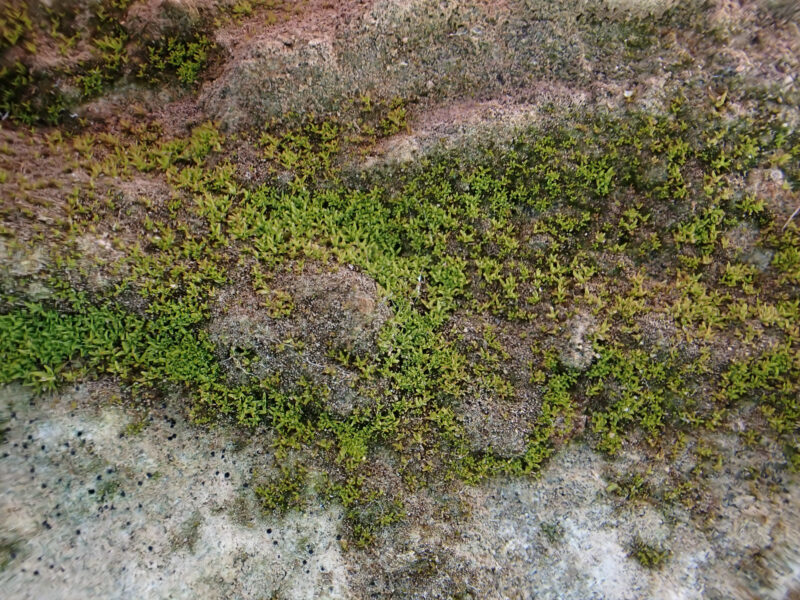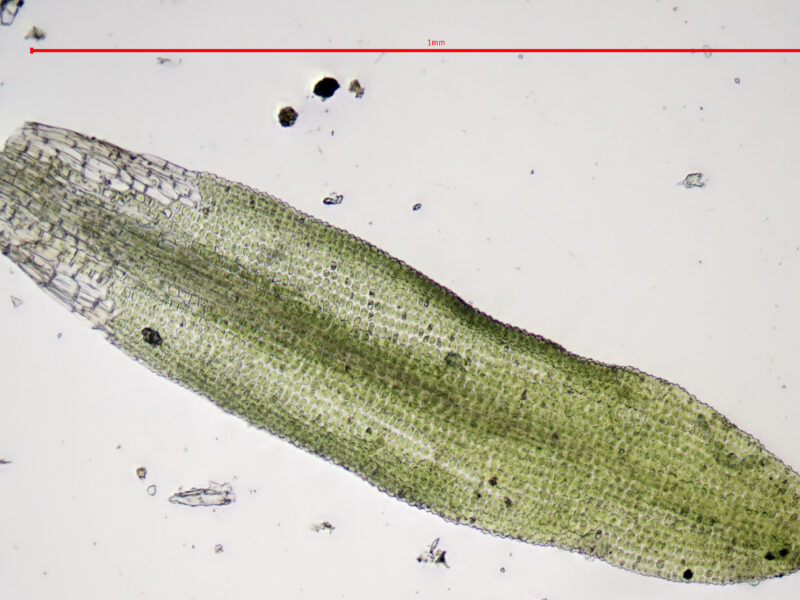Identification notes
This tiny plant forms loose dull green patches, only a few mm tall, on shaded and humid stone and mortar. It can be found in natural habitats such as sandstone or soft limestone, often where stones have become detached and fallen on the ground, but it is also a characteristic member of the bryophyte community that can be found on brickwork and other masonry in sheltered and shaded locations at the base of bridges, churches, and old buildings. It does seem to have a preference for humid locations so often is found near water. Leaves are short and stiff, being mainly parallel-sided with an obtuse apex.
Capsules are sometimes encountered and are ellipsoid or subcylindrical with an obliquely rostrate lid and no peristome. Protonemal gemmae are produced.
It grows in similar habitats to Leptobarbula berica, a more Mediterranean species which seems to be less demanding of humidity and will grow on more horizontal and exposed surfaces forming brighter green patches. The leaves of Leptobarbula tend to be longer in relation to their width, and are frequently slightly recurved or flexuose. Leptobarbula capsules are more longly cylindrical and have a peristome.
Read the Field Guide account


















